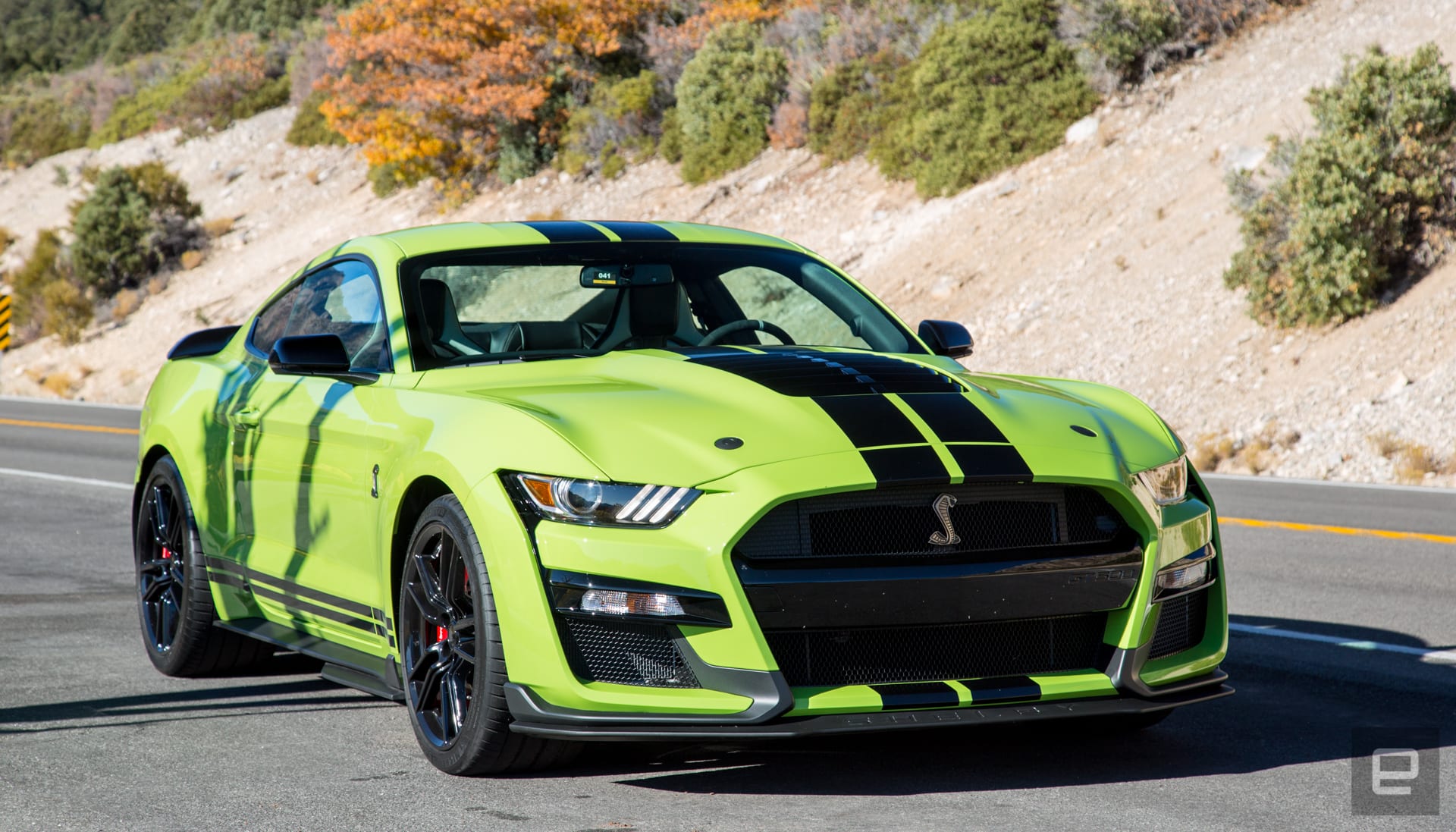
I pull up, and a gentleman hands me a slip: 11.287 seconds. That's how quickly I covered a quarter mile at the Las Vegas Motor Speedway, from a dead stop, in the 2020 Ford Shelby Mustang GT500. I whisper "dammit" under my breath because this 760-horsepower machine will do that run in 10.7 seconds.
Starting at $74,000, the 2020 Mustang Shelby GT500 has more power than most of its owners will ever use. But unlike some cars that are built specifically for the track -- and this car is most certainly built to be driven on a closed course -- the GT500 can also handle your daily errands. It won't rattle your teeth out of your head because of a stiff suspension or feel like a powerful beast constantly tugging at the leash of decorum while it carries occupants to Target.
It's less "smash" Hulk and more "scientist" Hulk. It's still capable of incredible things, but you can have a cruise around town with it before the supercharged V8 pushes out a zero to 60 in 3.3 seconds or whips the back end around because you got a little too excited with the accelerator.
At its core, it's the latest generation of Mustang. A smarter, more refined muscle car. That carries over to this Shelby-tuned masterpiece. On the road, on the track and on the drag strip, the Shelby GT500 is more than the sum of its parts.
It's easy to cram power into a vehicle. It's a lot tougher to tune the dual-clutch 7-speed transmission to handle that power with aplomb. With gear shifts that occur in 80 milliseconds, most of the arguments about a manual transmission drift away. Would I like a manual transmission? Sure, but it's not a deal-breaker in the slightest.
On the course and on the open road, the vehicle delivered quick shifts right where you needed them. Linking corners was a joy as the transmission engaged the correct gear as I braked into a tight corner and accelerated out.
What's equally impressive is how light the vehicle felt for its size. On the track, I expected a much larger weight shift between corners. It wasn't nearly the issue I expected as I tossed the vehicle side to side and around very sweeping corners that didn't seem to end. The ride is a combination of hardware and tuning Ford's active MagneRide suspension system.
When I wasn't on the track, the suspension in normal mode did its best to smooth out bumps and ruts on the highway. It did an adequate job and was better than expected. But, when you buy a vehicle like this, you're not looking for a luxury ride and it's far from that.
The interior is nearly identical to the regular Mustang. The prancing pony has been replaced with the Shelby Cobra both inside and out. The stock seats are comfortable and the Recaro race seats are as comfy as race seats can be.
The Sync 3 infotainment system is also what you would find in the regular Mustang. It's solid with very little latency and surfaces the features you need most. Navigation supports waypoints, which is always a bonus for days when you want to cruise without taking the shortest route to your destination.
The dash cluster is still where all the fun resides. Via a Cobra button on the steering wheel, drivers can access the track apps including launch control and everyone's favorite burnout mode: Line Launch. Once enabled, you just stomp on the gas and watch your tires turn into smoke. The feature has a satisfying brake-pedal pull so you know those front tires aren't going anywhere while the rear-wheeled beast belches and screams as rubber is detached from a tire.
In the car, the feature is fun. Outside, it looks grand. It helps that the Shelby GT500 looks the part of a track car without looking douchey. It's aggressive without looking like it'll show up to your house and beat you up for accidentally cutting it off on the highway. All the design elements had to meet the engineering specs for the vehicle. Larger tires resulted in the fenders flaring out. Aerodynamics and the air intake's needs informed the exterior design.
Making sure the Shelby GT500 design optimally cut through the wind, the creation and testing of the vehicle relied heavily on 3D printing. It allowed quick prototyping of elements that needed to be adjusted during testing. Sometimes even a few millimeters can have a noticeable effect on aerodynamics and driving. To have to retool the machines to remake a part for the tiniest adjustment would take months. With 3D printing, it could be done in a matter of days.
In fact, it would have been difficult for Ford and Shelby to have built this car just a decade ago. Adding an additional 300 horsepower to the engine found in the regular Mustang GT is impressive even with a huge 2.65-liter supercharger strapped to it. With today's tech, you can add that power, but also tame it.
While the starting price is $74,000, it's easy to add features (including a pricey $18,500 carbon fiber track pack with carbon fiber wheels) and push the price up to about $95,000. So you'll drop a ton of cash for the ability to say you have the most powerful production Mustang ever sold. But if you just have to pull 10s (or at least low 11s) at the drag strip or power your way around a track without skidding into the gravel, the Shelby GT500 will do all that and take you to the store afterward.
Source: Ford
via engadget.com





0 Response to "Ford Mustang Shelby GT500: Great on the track, good enough for the road"
Post a Comment